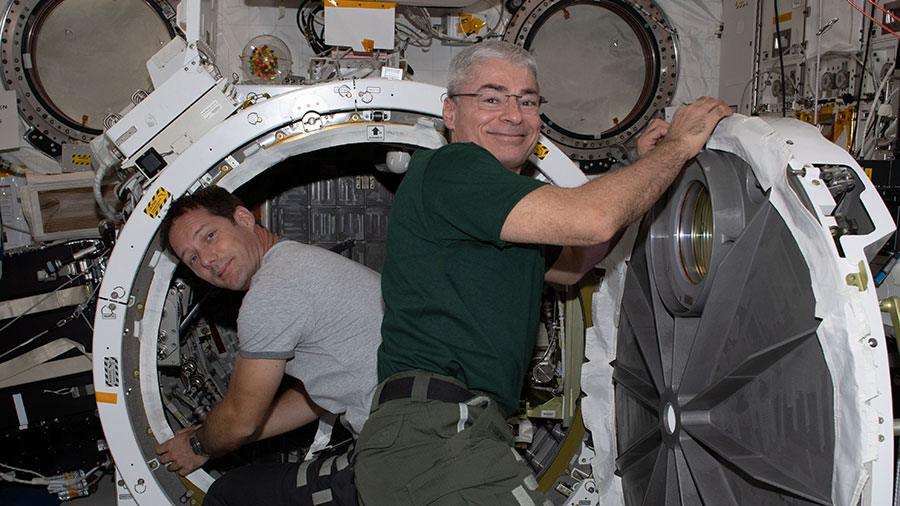Life Science Work Fills Day Ahead of June Spacewalks

The Expedition 65 crew is staying focused on numerous life science experiments aboard the International Space Station today while gearing up for three spacewalks in June.
The Celestial Immunity study has been ongoing aboard the orbital lab since shortly after it arrived on the SpaceX Crew-2 mission. NASA Flight Engineer Megan McArthur started Wednesday retrieving donor cell samples from a science freezer before thawing and spinning the cells in a centrifuge. Next, NASA Flight Engineer Mark Vande Hei inoculated and treated the sample cultures to help scientists observe the differences from samples harvested on Earth. Results could lead to improved vaccines and treatments for diseases on Earth, as well as advance the commercialization of space.
Akihiko Hoshide, Japan’s second station commander, spent the day on a variety of human research studies. In the morning, he took glucose measurements and collected blood samples for the Phospho-Aging and Vascular Aging studies looking at bone, muscle and artery changes in space. Hoshide then took turns with ESA Flight Engineer Thomas Pesquet wearing a virtual reality headset and clicking a trackball for the Time Perception experiment. Researchers are exploring how astronauts perceive space and time which may impact navigation and fine motor coordination in microgravity.
Over in the Tranquility module, NASA Flight Engineer Shane Kimbrough, with assistance from Vande Hei and Pesquet, continued more maintenance work on the Water Processing Assembly (WPA) due to a suspected leak. The WPA, which recycles water into drinkable water, has been powered down for several days during the troubleshooting work. The crew is fine and has several months of water supply on the station if necessary.
Next month’s first spacewalk is planned for June 2. Cosmonauts Oleg Novitskiy and Pyotr Dubrov will spend about six-and-a-hours on external maintenance and installing science experiments. Novitskiy worked on Orlan spacesuit maintenance today before joining Dubrov for more Russian cardiac research to understand how weightlessness affects the circulatory system.
In mid-June, two U.S. spacewalks are planned for the installation of a pair of new solar arrays on the station’s Port-6 truss structure. Four more solar arrays will be installed on upcoming spacewalks to augment the orbiting lab’s power systems.
from Space Station https://ift.tt/2T5kSv1
Comments
Post a Comment